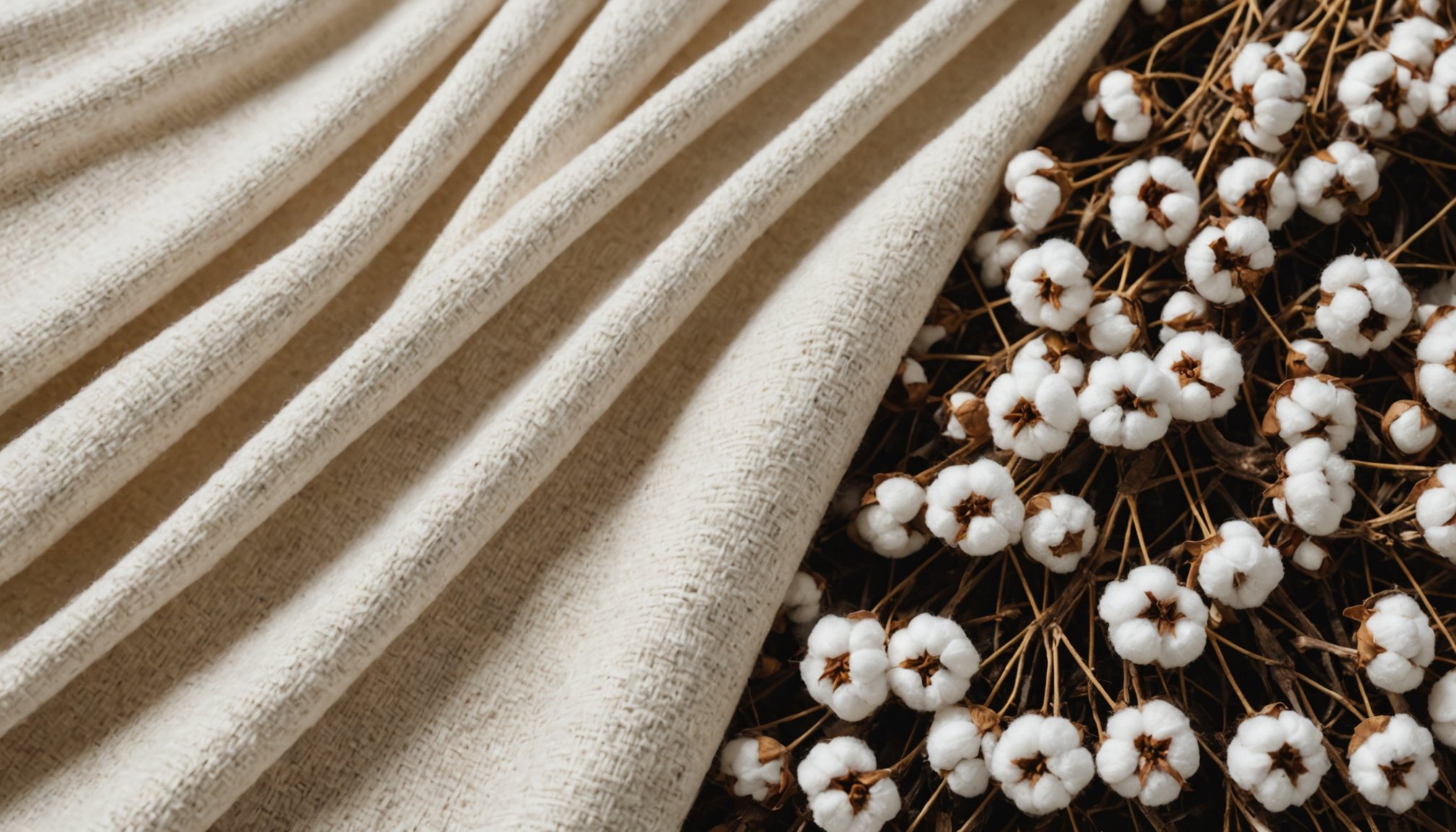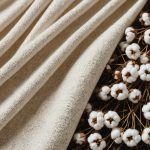Environmental Benefits of Organic Cotton
The adoption of organic cotton has vital implications for sustainability. By eschewing synthetic pesticides, it fosters healthier ecosystems and boosts biodiversity. Many organisms thrive without harmful chemicals, aiding in breaking pest cycles and maintaining balanced ecological communities.
Water Consumption Comparison
Eco-friendly fashion extends beyond the absence of chemicals – it includes mindful resource use. Organic cotton educates on substantial water savings compared to conventional cotton. Traditional cotton often relies on intensive irrigation, while organic farming employs rain-fed methods as much as possible. This conscious approach significantly reduces its overall water footprint.
In parallel : Top Strategies for Effortlessly Organizing Your Makeup Collection for Instant Access
Soil Health and Carbon Sequestration
Beyond wildlife and water, organic farming practices promote healthier soils. Through crop rotation and composting, organic methods enhance soil structure and fertility. This benefit promotes greater carbon sequestration, crucial in mitigating climate change. Environmental impact through organic agriculture can notably contribute to lower atmospheric carbon levels by naturally capturing it within the soil through these improved practices.
In conclusion, embracing organic cotton sustainability offers a multifaceted approach to more sustainable agriculture. By addressing global issues of pesticide use, water waste, and soil degradation, organic cotton represents a step toward a more sustainable and environmentally supportive fashion industry.
In the same genre : Unlocking Daily Joy: How Mindfulness Practices Can Transform Your Routine for a Better You
Health Advantages of Using Organic Cotton
When it comes to caring for our skin, selecting skin-friendly fabrics can make a significant difference. Organic cotton stands out as an ideal choice, especially for individuals with sensitive skin. Unlike conventional textiles, organic cotton is free from toxins, thanks to its cultivation without synthetic chemicals.
Hypoallergenic Materials
Organic cotton is naturally hypoallergenic, making it an excellent option for people prone to allergies or skin irritation. Its fibres are gentle and less likely to trigger an adverse reaction, providing comfort and peace of mind. This can be attributed to its production process, which eschews harmful substances that are commonly used in typical cotton farming.
Health Implications of Avoiding Synthetic Chemicals
Using hypoallergenic materials like organic cotton means avoiding the myriad of health risks associated with synthetic chemicals. Conventional cotton often undergoes chemical treatments that can leach into your skin. In contrast, organic practices eliminate these risks, promoting better overall well-being.
Expert Opinions
Experts argue that wearing organic cotton has numerous health benefits beyond just being skin-friendly. The absence of pesticides and herbicides in organic cotton farming not only supports skin health but also contributes to environmental sustainability. Choosing organic cotton is a proactive step towards well-being and ecological responsibility.
Production Processes of Organic Cotton
Embarking on the journey of organic cotton production involves several meticulous steps—from farming to processing. The cycle starts with seed selection, where genetically modified options are excluded to ensure authenticity. Farmers employ natural pest management strategies, avoiding synthetic pesticides and fertilisers. This approach not only supports biodiversity but also maintains soil health.
Once harvested, the cotton is meticulously sorted and cleaned, adhering to rigorous sustainability standards. Sustainable textile manufacturing practices are pivotal during processing; water consumption is minimised, and non-toxic dyes are employed, reducing environmental impact.
To ensure the highest ethical standards, certifications such as Global Organic Textile Standard (GOTS) and Organic Content Standard (OCS) are pivotal. These certifications verify that every step of production upholds ethical and eco-friendly standards.
However, the journey isn’t without challenges. Organic cotton producers often confront issues like pest infestations and lower yields compared to conventional farming. Yet, innovations such as the development of pest-resistant crop varieties and improved irrigation techniques are making strides in overcoming these hurdles.
Incorporating sustainable and ethical practices, organic cotton production stands as a beacon of responsible textile manufacturing, paving the way for a greener future.
Consumer Trends and Market Appeal
As the fashion industry evolves, there is a notable shift towards sustainable fashion demand. Many consumers now prioritise products that align with ethical values. This rise in environmental awareness is reflected in the increasing preference for textiles like organic cotton.
Recent data shows that the organic cotton market trends illustrate significant growth. As reported in industry analyses, there’s been an annual increase in organic cotton consumption, driven mainly by conscientious consumer behavior. This reveals a strong market demand for sustainable fashion, which brands need to address.
Brands that have successfully incorporated organic cotton market trends into their lines are reaping the benefits. Take the example of a major high-street brand which revamped its product line to include organic cotton. They reported a noticeable uptick in sales and customer satisfaction. This aligns with the growing trend where ethical production becomes a competitive advantage.
Moreover, these consumer choices reflect a broader shift. Research shows it’s not just about making eco-friendly purchases, but also about supporting companies with transparent supply chains and sustainable practices. For any brand looking to capture this audience, integrating organic cotton is not just advisable; it’s increasingly becoming necessary.
Tips for Incorporating Organic Cotton into Fashion Collections
Integrating organic cotton into your fashion collection not only supports sustainable design practices but can also enhance your brand’s appeal to eco-conscious consumers. The key to seamless integration lies in sourcing and collaboration.
Begin by partnering with reputable suppliers who are known for providing high-quality organic cotton. It’s crucial to vet suppliers for certifications that verify their sustainable practices, ensuring that your materials are ethically sourced. Establishing strong relationships with these suppliers can lead to greater reliability and quality consistency.
In terms of design, focus on creating collections that balance style and function. Consider the natural texture and drape of organic cotton, using it creatively to produce garments that are both fashionable and comfortable. This involves playing with design considerations, such as colour palettes and silhouettes, that highlight the unique properties of organic cotton.
Marketing strategies are pivotal in reaching environmentally conscious consumers. Emphasize the sustainability aspect of your collections through storytelling that connects the consumers with the journey of organic cotton—from farm to fashion. Leverage social media and influencer collaborations to showcase the benefits of choosing eco-friendly fashion. By adopting these practices, your brand will not only appeal to a broader audience but also contribute to a more sustainable future.
Visuals and Statistics on Sustainability in Fashion
In today’s fashion landscape, sustainability statistics play a crucial role. Analyzing data concerning organic cotton reveals impressive environmental benefits when compared to conventional cotton. For instance, cultivating organic cotton reduces water usage by up to 91%, highlighting its eco-friendly impact through intuitive infographics. Such visuals assist consumers in understanding the importance of making environmentally conscious choices.
The visual impact of organic cotton is further emphasized through engaging visual branding. Many fashion collections now embrace eco-friendly fashion visuals, which creatively merge style with sustainability. Strategically designed logos and labels convey a commitment to preserving the environment, making it easier for consumers to identify sustainable products.
Furthermore, photography and design significantly impact conveying the advantages of organic cotton. Professionally captured images of sustainable clothing not only showcase the aesthetic appeal but also narrate the story of responsible fashion. Creative designs can subtly incorporate messages about eco-friendliness, enhancing the consumer’s perception of the brand’s dedication to sustainability.
Through effective use of visuals and well-illustrated statistics, consumers are better informed and encouraged to make responsible and sustainable fashion choices. This aligns with an increasing demand for transparency and accountability within the fashion industry.











